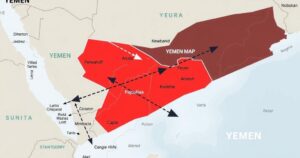US Launches Airstrikes on Iranian Nuclear Sites; Trump Calls for Peace

The U.S. military launched airstrikes on three Iranian nuclear sites, announced by President Trump. This action follows Israel’s prior military strikes and Trump’s call for Iran’s unconditional surrender. Tensions escalate as both nations brace for further military engagement, with the potential for significant ramifications.
In a remarkable escalation of military actions, the United States has launched airstrikes against three nuclear sites in Iran, as confirmed by President Donald Trump on Saturday night. This development comes after weeks of heightened tensions and is a direct response to earlier strikes initiated by Israel aimed at crippling Iran’s military infrastructure. In his announcement via Truth Social, Trump stated, “We have completed our very successful attack on the three Nuclear sites in Iran, including Fordow, Natanz, and Esfahan. All planes are now outside of Iran air space.”
Trump claimed that a “full payload of BOMBS” was dropped at the Fordow site and lauded the American military’s capabilities, expressing, “There is not another military in the World that could have done this. NOW IS THE TIME FOR PEACE!” His recent comments reflect his increasingly hardline stance against Iran, emphasizing his impatience for the nation to abandon its nuclear ambitions.
The U.S. strikes followed Israel’s own military offensive, which had begun by targeting key Iranian personnel involved in nuclear development. Trump’s decision to act came amidst a flurry of behind-the-scenes negotiations, where he fluctuated between a potential diplomatic solution and military intervention. “Very simple — unconditional surrender,” he stated, calling for Tehran to concede to U.S. demands, all while encouraging Israeli strikes to continue.
As tensions simmer, Trump also issued stern warnings to the Iranian leadership. He publicly confirmed the U.S. intelligence on Iran’s Supreme Leader Ayatollah Ali Khamenei’s location, suggesting that Tehran’s inaction could lead to harsher consequences. Khamenei’s retort to Trump’s threats was one of defiance, stating, “The Iranian nation isn’t frightened by such threats,” indicating a fierce opposition to U.S. pressure.
In light of the conflict, the Israeli military has intensified its offensive operations. The continued airstrikes target those engaged in collecting arms from previous attack sites, as explained by IDF Spokesman Brig. Gen. Effie Defrin: “If you try to restore the terror capabilities in the area, you will be targeted.” This precarious situation escalated with Iranian missile launches in retaliation to the strikes.
Meanwhile, Russian President Vladimir Putin has stepped forward, extending an offer to mediate in the crisis, a move that Trump has reportedly dismissed. Amidst all this, Israel has hinted at forthcoming military actions that could surprise observers, a notion echoed by Israeli ambassador to the U.S., Yechiel Leiter, who cautioned about planned operations that would far exceed the previous military actions.
The stakes of the situation could not be higher as both Iranian and Israeli forces prepare for further engagement. The unfolding events seem to signal a path with no easy resolutions, and the international community holds its breath as the ramifications play out in this already volatile region.
In summary, the airstrikes by the United States on Iranian nuclear sites mark a significant escalation in an ongoing conflict that has drawn in multiple parties, including Israel and potentially Russia. Trump’s rhetoric underscores a blunt approach, demanding Iranian surrender while promoting military might. As the situation develops, the implications of these military actions could reverberate throughout the region, raising concerns about further escalations. The dynamics of military, political, and diplomatic responses remain tense and uncertain.
Original Source: nypost.com








